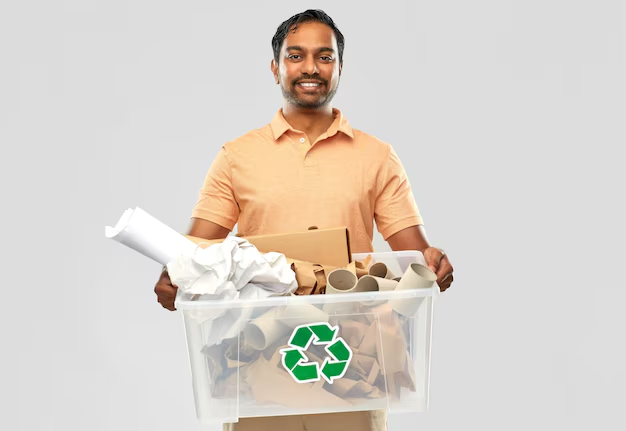As urbanization continues to grow, the challenges of waste management become more pronounced. The sheer volume of waste generated globally is increasing at an alarming rate, and traditional waste management practices are struggling to keep up. However, the rise of innovative technologies is providing new ways to address these issues, making waste management more efficient, sustainable, and environmentally friendly. From smart waste bins to artificial intelligence (AI) and robotics, technology is playing a pivotal role in reshaping the future of waste management.
In this article, we’ll explore the groundbreaking technologies that are revolutionizing waste management, how they work, and their potential to drive sustainability and efficiency.
1. Smart Waste Collection: IoT and Data Analytics
The Internet of Things (IoT) has made its way into waste management, enabling real-time monitoring and data-driven decision-making. By equipping waste bins and containers with sensors, cities and businesses can optimize waste collection processes, reduce operational costs, and improve service delivery.
Smart Waste Bins
- Sensors and Monitoring: IoT-enabled waste bins are fitted with sensors that monitor fill levels, temperature, and even odor. This data is transmitted to waste management services, allowing them to schedule pickups only when necessary, rather than following a fixed collection schedule.
- Optimized Routes: By tracking the fill levels of bins, waste collection trucks can follow the most efficient routes, reducing fuel consumption, emissions, and overall operational costs.
- Real-Time Alerts: When bins are full, they automatically send alerts to the waste management company, ensuring that the bins are emptied promptly and preventing overflow.
Data Analytics
- Predictive Maintenance: Data analytics can predict when waste collection vehicles or machinery are due for maintenance, helping prevent downtime and extend the lifespan of equipment.
- Waste Stream Analysis: By analyzing waste data, cities can identify trends and areas that require improvement, enabling better planning for future waste management needs and strategies.
2. Robotic Waste Sorting
Traditional waste sorting is a labor-intensive process that requires human intervention to separate recyclables from non-recyclables. This is not only inefficient but also dangerous for workers. Robotics and automation are revolutionizing this process, providing faster, safer, and more accurate sorting.
Robotic Arms and AI for Sorting
- Automated Sorting Systems: Using robotic arms equipped with AI and machine learning, waste management facilities can automate the sorting process. These systems can accurately identify, sort, and separate recyclable materials such as plastics, metals, and glass from mixed waste streams.
- Improved Efficiency: Robots can work at a faster rate and with greater precision than human workers, significantly improving the efficiency of sorting processes. Some systems are even capable of recognizing and sorting different types of plastic by their resin codes.
- AI Integration: AI-powered systems continually learn and improve their sorting accuracy over time, ensuring that more materials are correctly processed and recycled.
3. Waste-to-Energy Technologies
One of the most promising solutions to the growing waste crisis is converting waste into energy. This approach reduces the volume of waste going to landfills while simultaneously generating electricity or heat. Several waste-to-energy technologies are making significant strides in reducing our reliance on fossil fuels.
Incineration and Thermal Treatment
- Waste Incinerators: Incineration is a process where waste is burned at high temperatures to generate electricity. Modern waste incinerators are designed with advanced filtration systems to minimize harmful emissions and capture energy efficiently.
- Gasification and Pyrolysis: These technologies break down waste at high temperatures in the absence of oxygen (pyrolysis) or with limited oxygen (gasification). Both processes produce syngas, a mixture of gases that can be used to generate electricity or as a fuel source.
Biogas Production
- Organic Waste Digestion: Organic waste such as food scraps and agricultural waste can be converted into biogas through anaerobic digestion. This process produces methane, which can be used as a renewable energy source.
- Circular Economy Impact: By transforming organic waste into biogas, waste management operations can contribute to a circular economy, where waste is seen as a resource rather than something to be discarded.
4. AI and Machine Learning in Waste Management
Artificial intelligence is increasingly being used to optimize waste management processes, from collection and sorting to recycling and resource recovery.
AI-Powered Sorting and Recycling
- Smart Sorting: AI-based systems can identify different types of waste (paper, plastic, metal, etc.) in real time, automating the sorting process. Machine learning algorithms help improve the system’s ability to classify materials accurately as they learn from previous sorting data.
- Quality Control: AI can also be used to monitor the quality of recycled materials, ensuring that they meet the necessary standards for reuse in manufacturing.
Waste Collection Optimization
- Route Optimization: AI algorithms can optimize waste collection routes by analyzing traffic patterns, weather conditions, and bin fill levels, ensuring the most efficient route is taken.
- Predictive Analytics: AI can predict future waste volumes based on historical data, helping cities plan waste collection and disposal schedules more effectively.
5. Plastic Recycling Innovations
Plastic waste has become one of the biggest environmental challenges, but new technologies are emerging to help address the plastic crisis.
Chemical Recycling
- Breaking Down Plastics: Chemical recycling uses chemical processes to break down plastic into its original components, which can then be reused to create new plastic products. This differs from traditional mechanical recycling, which can degrade the quality of plastic over time.
- Closed-Loop Recycling: Chemical recycling enables a “closed-loop” system, where plastic waste can be continuously recycled without losing its quality, ensuring that plastics remain in circulation rather than ending up in landfills.
Enzyme-Based Recycling
- Enzyme Degradation: Researchers are developing enzyme-based solutions that break down plastic into smaller, reusable components. This process is still in its infancy but offers a potential breakthrough in dealing with plastic waste, especially hard-to-recycle plastics such as polyethylene terephthalate (PET).
6. 3D Printing and Waste Repurposing
3D printing, or additive manufacturing, is another innovative solution for reducing waste. Instead of producing new raw materials, 3D printing uses recycled waste materials to create new products, reducing the need for traditional manufacturing processes.
Upcycling with 3D Printing
- Recycled Plastic Filaments: Waste plastic can be converted into 3D printing filaments, which are then used to create a variety of products, from home goods to industrial parts.
- Eco-Friendly Manufacturing: 3D printing enables the creation of products with less waste and lower carbon footprints compared to traditional manufacturing, as it uses only the necessary amount of material and avoids overproduction.
7. Blockchain for Waste Management Transparency
Blockchain technology is being explored as a way to improve transparency and accountability in waste management systems. It can help track waste from its source to disposal, ensuring that it is processed in an environmentally responsible manner.
Tracking and Auditing
- Waste Tracking: Blockchain can provide a secure, immutable ledger that records every step in the waste management process. This allows consumers and businesses to verify that their waste is being disposed of or recycled properly.
- Regulatory Compliance: Blockchain helps ensure that waste management companies comply with environmental regulations by providing a transparent record of waste handling, recycling, and disposal.
8. Conclusion: Towards a Sustainable Future
The future of waste management lies in the adoption of innovative technologies that promote efficiency, sustainability, and circularity. From smart waste bins and robotic sorting systems to waste-to-energy solutions and blockchain transparency, technology is paving the way for a more sustainable and environmentally responsible waste management ecosystem.
As these technologies continue to evolve, they will not only improve the way waste is managed but also contribute to broader environmental goals, such as reducing carbon emissions, conserving natural resources, and minimizing landfill waste. By embracing these innovations, we can move toward a cleaner, greener future, where waste is seen as a valuable resource rather than a problem to be disposed of.

